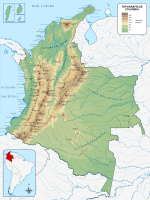
The oilbird, locally known as the guácharo, is a bird species found in the northern areas of South America including the Caribbean island of Trinidad. It is the only species in the genus Steatornis, the family Steatornithidae, and the order Steatornithiformes. Nesting in colonies in caves, oilbirds are nocturnal feeders on the fruits of the oil palm and tropical laurels. They are the only nocturnal flying fruit-eating birds in the world. They forage at night, with specially adapted eyesight. However, they navigate by echolocation in the same way as bats, one of the few birds to do so. They produce a high-pitched clicking sound of around 2 kHz that is audible to humans.
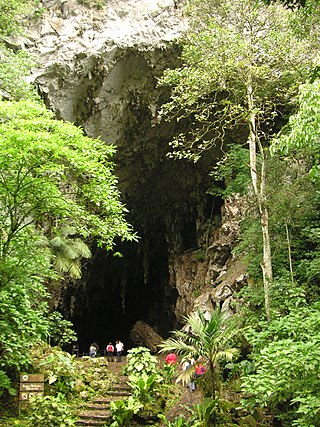
The Guácharo Cave National Park is located 12 km (7.5 mi) from the town of Caripe, Monagas, Venezuela. It has as its centerpiece a large limestone cave.

The Cueva de la Quebrada del Toro is a cave in the Sierra de Falcón in Falcón State, Venezuela. It is an active river cave, through which flows the largest known underground watercourse in Venezuela. It is protected as the Cueva de la Quebrada del Toro National Park.

The Cordillera Oriental is the widest of the three branches of the Colombian Andes. The range extends from south to north dividing from the Colombian Massif in Huila Department to Norte de Santander Department where it splits into the Serranía del Perijá and the Cordillera de Mérida in Venezuelan Andes. The highest peak is Ritacuba Blanco at 5,410 m (17,750 ft) in the Sierra Nevada del Cocuy.

Cutervo National Park , established in 1961, is the oldest protected area in Peru. It is located in the northern Peruvian Andes, in the region of Cajamarca. The park was extended to 8,214 hectares (31.71 sq mi) and protects areas of Andean montane forests and paramo for headwater conservation. Moreover, those areas are the habitat of animal species like the spectacled bear, the mountain tapir, and the oilbird; and plant species like the Andean wax palms.

The Munchique National Natural Park is a national park located in the Cauca Department in the Cordillera Occidental range in the Andean Region of Colombia. There are 30 streams and rivers, and 40 waterfalls in the area. The diversity of thermal levels makes the park a paradise for birds, especially hummingbirds.
Hacienda Nápoles was the luxurious estate built and owned by Colombian drug lord Pablo Escobar in Puerto Triunfo, Antioquia Department, Colombia, approximately 150 km (93 mi) east of Medellín and 249 km (155 mi) northwest of Bogotá. The estate covers about 20 km2 (7.7 sq mi) of land. Following Escobar's death in 1993, many of the original buildings on the property were demolished or reconditioned for other uses.

The Cocora valley is a valley in the Quindío Department of Colombia. It is located in the Central Cordillera of the Andean mountains. "Cocora" was the name of a Quimbayan princess, daughter of the local chief Acaime, and means "star of water".
Cueva de los Guácharos National Natural Park is the oldest national park in Colombia. Located in the western face of the Colombian Eastern Andean Range in the departments of Huila and Caquetá, the park covers an area of 9,000 hectares. The caves formed from the karstic zones of the Magdalena and Caquetá rivers.

Bahía Portete – Kaurrele National Natural Park is a national natural park in Uribia, La Guajira, Colombia. The northernmost national park of mainland South America is located at the Caribbean coast of the La Guajira peninsula in Bahía Portete, between Cabo de la Vela and Punta Gallinas. Established on December 20, 2014, it is the most recently designated national park of the country. As of 2017, 59 nationally defined protected areas are incorporated in Colombia. The park hosts a high number of marine and terrestrial species.
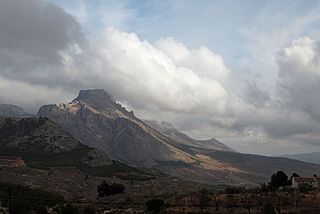
Sierra de María-Los Vélez Natural Park is a natural park of Spain. It is situated in Almería province in the municipalities of Chirivel, Maria, Vélez-Blanco, Vélez-Rubio.
Cuevas del Silvino is a limestone cave system in Guatemala. It is located at km 260 on the road connecting Guatemala City to Puerto Barrios, in the municipality of Morales in the department of Izabal.

The Los Estoraques Unique Natural Area is one of the smaller national parks, covering only 6 km2 (2.3 sq mi), located in the Cordillera Oriental of Colombia in the Norte de Santander Department. The landscape is shaped by large brownstone pedestals and columns formed by thousands of years of erosion. The area is part of the Catatumbo River basin and elevation range from 1,450 to 1,900 meters above mean sea level. It was declared an Área Natural Única in 1998.
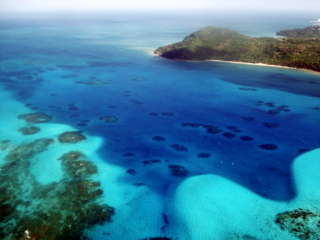
The Old Providence McBean Lagoon National Natural Park is a national park located on the northeast side of Providencia Island in the Archipelago of San Andrés, Providencia and Santa Catalina, Colombia.
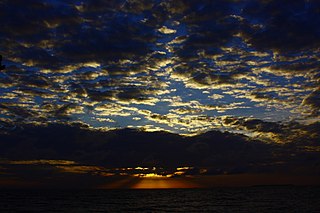
The Rosario and San Bernardo Corals National Natural Park is a natural park located in the Sucre and Bolívar Departments on the coast of the Caribbean Region of Colombia, 45 km from the Bay of Cartagena. It was the most visited national park in Colombia in 2009, with 318,473 visitors.
The National System of Protected Areas (SINAP) is the Colombian national park administrator. It is a department under the Ministry of the Environment, Housing and Regional Development responsible for the conservation and sustainable use of biological diversity. SINAP was established after Colombia signed the Convention on Biological Diversity through Law 165 of 1994, and has been the primary activity of the Colombian Government regarding the conservation of biodiversity. The areas of the Park System supply 25 million people with water.

Insurgentes Sur is a station on Line 12 of the Mexico City Metro. The station is located between Mixcoac and Hospital 20 de Noviembre. It was opened on 30 October 2012 as part of the first stretch of Line 12 between Mixcoac and Tláhuac. It is built underground.
Vismia mandurr, the mancharropa or puntelanza, is a species of flowering plant in the family Hypericaceae, native to Colombia, Ecuador, and Peru. It is fed upon by Colombian woolly monkeys.















